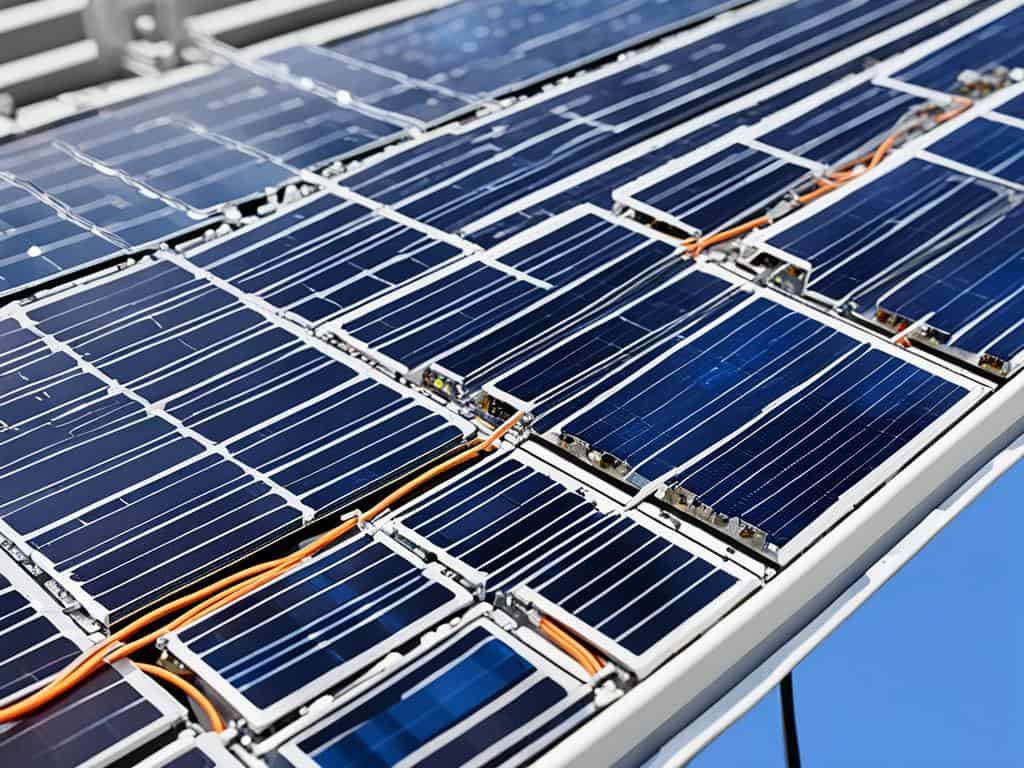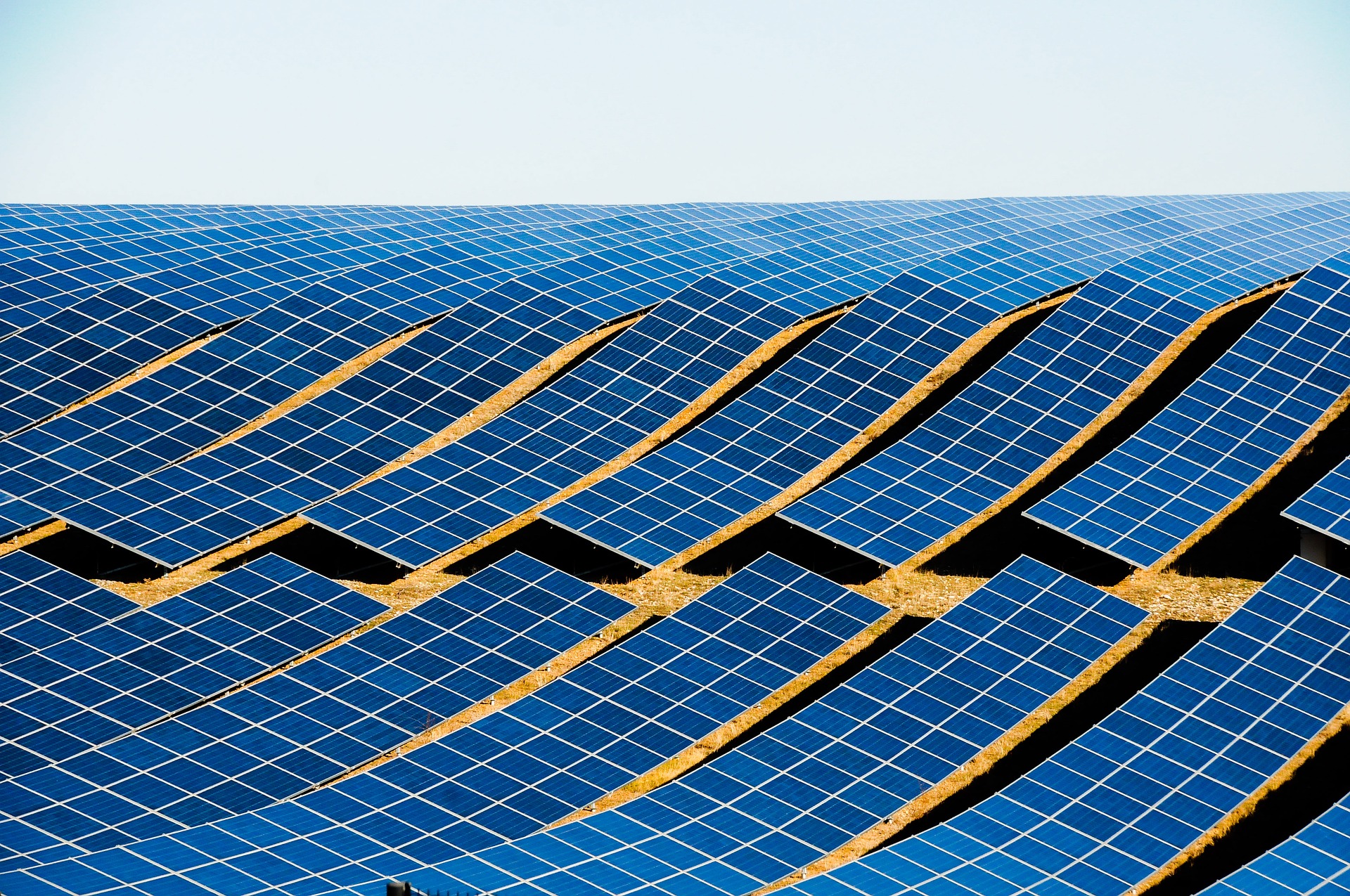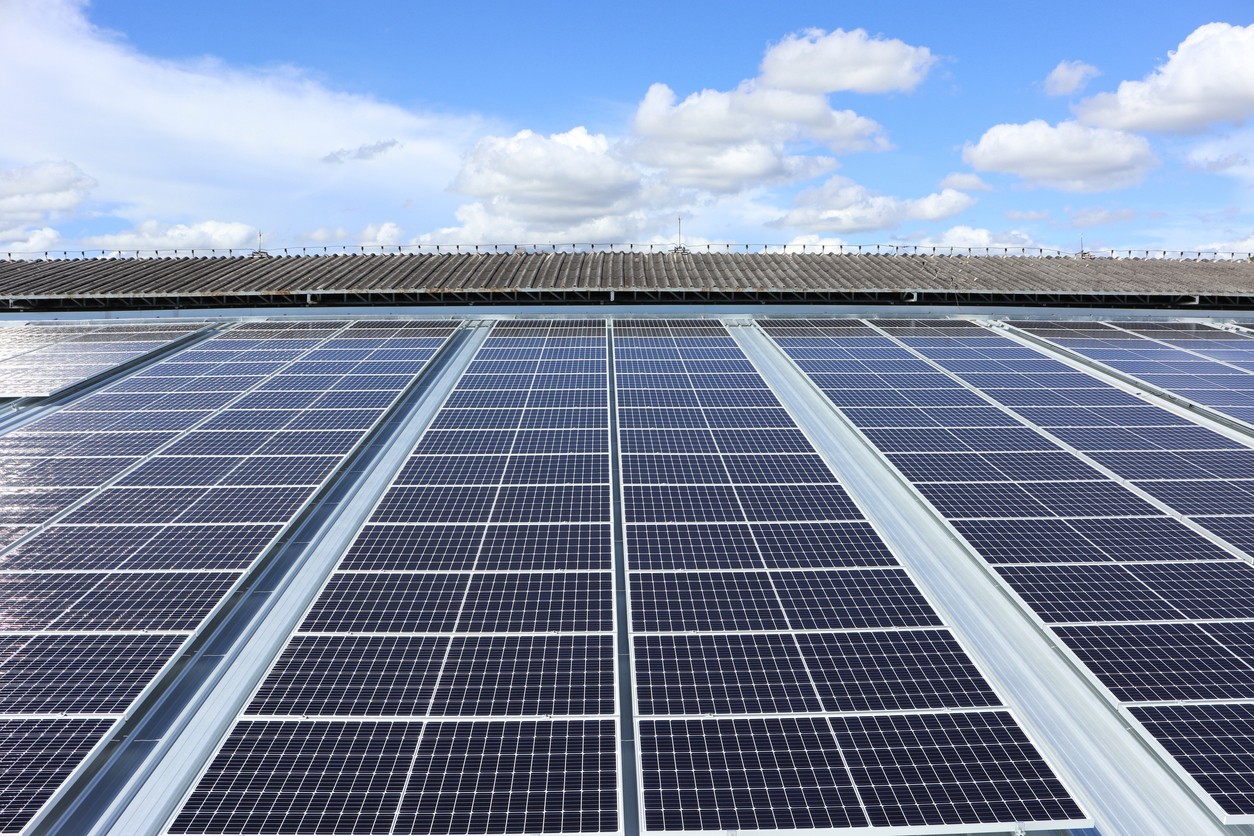To distinguish between polycrystalline and monocrystalline solar panels, you can use several methods. By sight, Monocrystalline panels are typically deep black, with rounded edges and a uniform overall appearance. Polycrystalline panels have a blue or spotted coloration and appear less smooth, as they have visible crystalline granules. At the efficiency, monocrystalline panels are typically between 15% and 22% efficient, while polycrystalline panels usually fall within a range of 13% to 17%. You can also check the temperature coefficient. A good monocrystalline panel has a temperature coefficient of around -0.3%/°C and will, therefore, perform more stably on hot days.
Appearance Features
Monocrystalline panels are famous for their deep black color and sleek look. Panels like this all come from a single silicon crystal and, as a result, look upscale with a very even design. You will notice that the individual cells of monocrystalline panels often seem tidier and have precision-cut edges with regularly curved corners.
Polycrystalline solar panels, generally are blue and have several grain-like structures in them. It is a textured material that is created by the melting and cooling of multiple silicon crystals at high temperatures. This texture helps in quickly identifying polycrystalline panels. Experimental observations have shown that surfaces of polycrystalline panels feature depths ranging from 1.5 to 2 micrometers, whereas monocrystalline panels range from 0.5 to 1 micrometer, such that the surface appears smoother.
Efficiency of Solar Panels
Solar panel efficiency is important because it tells you how much of the sunlight your solar panels will be able to turn into electricity. Monocrystalline panels can achieve efficiencies between 15% to 22%, while polycrystalline panels' efficiencies range from 13% to 17%. Other related research indicates that high-quality monocrystalline panels can achieve efficiencies of up to 24.4%. A monocrystalline panel of 1 square meter may produce 250 watts, while the same size polycrystalline panel yields only 200 watts, which means there is a difference in efficiency of up to 25%.
Under sunny conditions, a monocrystalline panel generates 456 kilowatt-hours per year based on 5 hours of sunlight exposure each day, while a polycrystalline panel would generate 365 kilowatt-hours. This annual difference means a monocrystalline panel produces about 91 more kilowatt-hours, a considerable gain for home or business energy demands.
Price Differences
When you decide to have solar panels installed in your home, price becomes one of the integral factors that need consideration. Monocrystalline panels have a more expensive production cost, which puts their market prices generally between $1.20 and $2.00 per watt. On the other hand, polycrystalline panels cost only $0.80 to $1.50 per watt due to the simpler production process used in their manufacture.
A full 5-kilowatt solar system with monocrystalline panels costs between $6,000 and $10,000, while polycrystalline panels can reduce costs to as low as $4,000 to $7,500. At first glance, this makes polycrystalline panels seem to be a more price-competitive option. However, the superior efficiency of monocrystalline panels means that they could actually generate more energy in total. This would result in an additional 91 kilowatt-hours per year generated by monocrystalline panels (at $0.10 per kilowatt-hour), which means annual savings of $9.10.
Temperature Coefficient
A solar cell's temperature coefficient provides information about how a solar panel's performance changes under high temperatures. Monocrystalline panels usually have a temperature coefficient of about -0.3%/°C, so that for each 1°C increase in temperature of the panel, its efficiency decreases by around 0.3%. Polycrystalline panels, on the other hand, generally have a temperature coefficient between -0.4%/°C and -0.5%/°C.
Temperatures in summer can rise to 35°C or higher. A monocrystalline panel with a starting efficiency of 20% might reduce to around 18.5% at temperatures up to 35°C; however, in the same situation, a polycrystalline panel might drop to 17% or below. The difference in performance in this temperature range is significant in tropical or subtropical regions, making monocrystalline panels more advantageous in such climates. On average, monocrystalline panels may produce 15% to 20% more electricity annually than polycrystalline panels, especially in warmer climate zones.
Service life
When it comes to long-term investment returns, panel lifespan is a key metric. Monocrystalline panels typically have a life of more than 25 years, while polycrystalline panels will last around 20 years. This is mainly related to the more solid model of monocrystalline modules and, accordingly, their greater age resistance.
Manufacturers provide data suggesting that monocrystalline panels typically only lose 20% of their efficiency over their lifespan, meaning that after 25 years, they will have retained approximately 80% efficiency, whereas polycrystalline panels can drop to 70% after only 10 years. This discrepancy impacts not only the generation of power but also investment returns. For example, suppose a monocrystalline panel generates 1,000 kilowatt-hours of electricity annually and maintains efficiency, even with an efficiency drop to 80% in its final five years. In that case, it will generate a total of approximately 18,500 kilowatt-hours over 20 years. In contrast, a polycrystalline panel might generate only around 14,000 kilowatt-hours in the same period.
Environmental Adaptability
Environmental adaptability is another consideration when selecting solar panels. Monocrystalline panels outperform polycrystalline panels in varying light conditions (shades, clouds) and can maintain high efficiency under low light, such as cloudy or overcast days. In such cases, monocrystalline panels achieve around 90% efficiency, while polycrystalline panels might only reach 75%.
Monocrystalline panels also have superior wind and snow load resistance, making them more resilient in extreme weather conditions. They are less likely to have snow stick to the surface, as these panels have smooth surfaces from which snow can slide off more easily, and they tend to heat up faster, which helps recovery in winter times.
The selection of solar panels according to the climate, geographic location, and individual needs affects your power generation efficiency and payback time. Monocrystalline solar panels are the best option for sunny regions, as their temperature tolerance is higher, and they can work at high temperatures. As a viable solution in low-light areas or with tight budget constraints, we can use polycrystalline-based cells.



